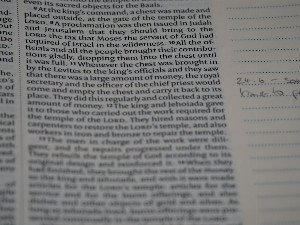Michael Allen
Ritualized Homosexuality, Male Power and Political Organization in North Vanuatu: A Comparative Analysis
Introduction
Ritualized homosexuality, male power and political organization in north vanuatu: a comparative analysis. Explore ritualized homosexuality, male power, and political organization in North Vanuatu. Analyzes historical accounts from Malekula and nearby islands, focusing on initiation rites.
Abstract
THE ISLAND of Malekula, in north Vanuatu, has for long been recognized as a locus classicus for the occurrence of organized male homosexuality. Deacon, who carried out his field researches in 1926, was the first to publish a reasonably detailed account (1934:260-69) of the highly institutionalized variety that occurs among the Big Nambas in the north. But it was Layard, who had worked at a much earlier period ( 1914-15) on the nearby offshore islands ofVao and Atchin, who subsequently incorporated Deacon's data into an early attempt to appreciate the theoretical significance of the practice (Layard 1942:503-22). Though homosexual behaviour as such did not appear to occur in the Small Islands, Layard noted the presence of dramatized representations on the part of ancestral spirits in the context of the boys' compulsory initiation rites.
Review
The paper embarks on a fascinating and historically significant topic, revisiting the "locus classicus" of organized male homosexuality in North Vanuatu, specifically Malekula. The title, "Ritualized Homosexuality, Male Power and Political Organization in North Vanuatu: A Comparative Analysis," promises a multifaceted exploration that connects a specific social practice to broader structures of power and governance. By building upon the foundational work of early ethnographers like Deacon and Layard, the author positions the study within a rich historical lineage, indicating a critical engagement with established anthropological discourse on the region. This approach offers a valuable opportunity to re-evaluate and potentially re-interpret classic ethnographic data through a contemporary lens, addressing questions that remain pertinent to the study of gender, ritual, and power dynamics. The abstract provides a good historical overview, detailing the contributions of Deacon concerning the Big Nambas' highly institutionalized homosexuality and Layard's subsequent theoretical integration of this data, alongside his own observations from Vao and Atchin. It effectively highlights the nuance that while overt homosexual behaviour might not have occurred in the Small Islands, its symbolic presence through dramatized ancestral spirits in initiation rites is noteworthy. However, while the abstract establishes these distinct observations, the promised "comparative analysis" remains largely implicit. The abstract describes differences rather than outlining the specific analytical framework or theoretical tools that will be employed to *compare* these phenomena (institutionalized practice vs. symbolic representation) and link them explicitly to "male power and political organization" as stated in the title. Further, the extent to which the paper will move beyond a historical synthesis to offer new empirical insights or a novel theoretical contribution is not fully articulated. Despite these points, the paper holds significant potential. Its focus on a historically important ethnographic region and a complex, often sensationalized, social practice is commendable. To fully deliver on its ambitious title, the complete paper should clarify the explicit mechanisms of its comparative analysis, detailing how different forms of "ritualized homosexuality" or its symbolic representations articulate with distinct configurations of male power and political structures across the various communities discussed. It would be beneficial to elaborate on the theoretical framework guiding this comparative work, explaining how it moves beyond Layard's early attempts to appreciate theoretical significance. Ultimately, this promises to be an important contribution to Melanesian ethnography and the broader anthropology of sexuality and power, provided the comparative and theoretical depth hinted at by the title is thoroughly explored and substantiated in the main body of the work.
Full Text
You need to be logged in to view the full text and Download file of this article - Ritualized Homosexuality, Male Power and Political Organization in North Vanuatu: A Comparative Analysis from Sydney Studies in Society and Culture .
Login to View Full Text And DownloadComments
You need to be logged in to post a comment.
Top Blogs by Rating
Unlocking Life's Source Code:...
By Sciaria
Unmasking the Macabre: The Dar...
By Sciaria
Beyond the Stereotype: Unpacki...
By Sciaria
Favorite Blog
Big Data's Echo Chamber: The U...
By Sciaria
Identical Twins Aren't Identic...
By Sciaria
Are You Just a Colony? The Int...
By Sciaria
Related Research
Implementation of game-based learning in improving learning motivation of elementary school students
Application of wordwall media in ppkn learning for grade iv elementary school students: a qualitative study
Estudo sobre avaliações psicológicas e seu papel na execução penal
Share
Notice Board
- IMPLEMENTATION OF INTERACTIVE MODULES USING PROBLEM-BASED LEARNING MODELS IN PROGRAMMING ALGORITHM COURSES
- PENGARUH METODE PEMBELAJARAN BERBASIS MASALAH TERHADAP HASIL BELAJAR PADA MATERI KEANEKARAGAMAN HAYATI DI KELAS X IPA SMAN 3 SINJAI
- BIBLIOMETRIC ANALYSIS OF RESEARCH TRENDS IN CURRICULUM DEVELOPMENT BASED ON THE COVID-19 PANDEMIC





